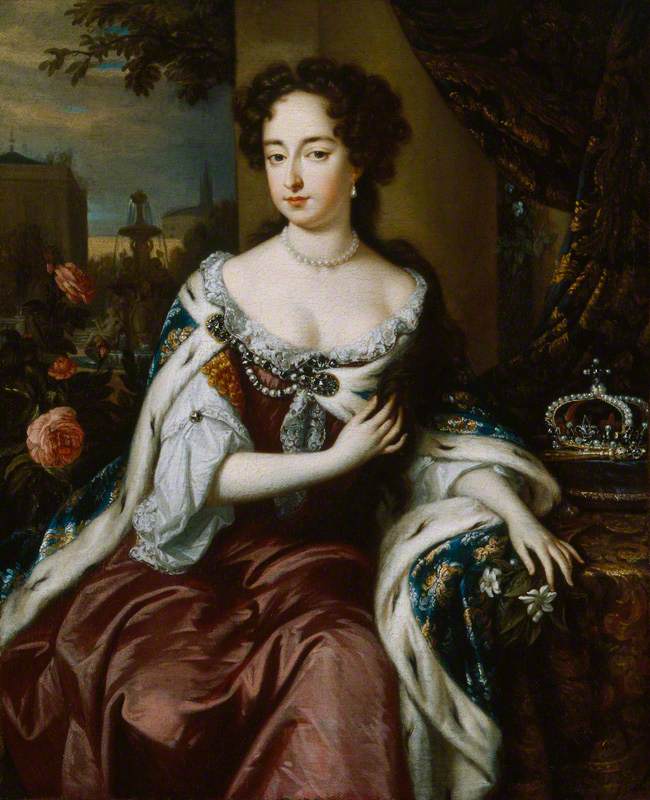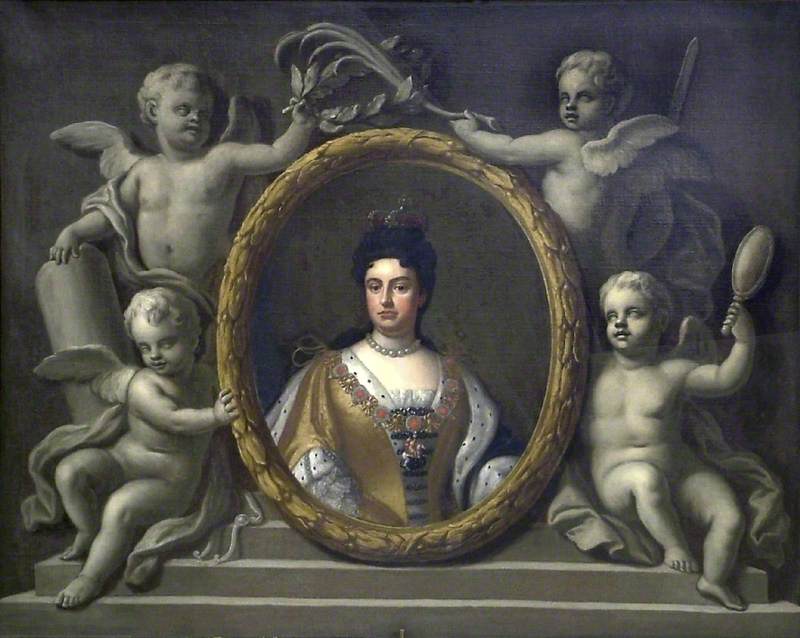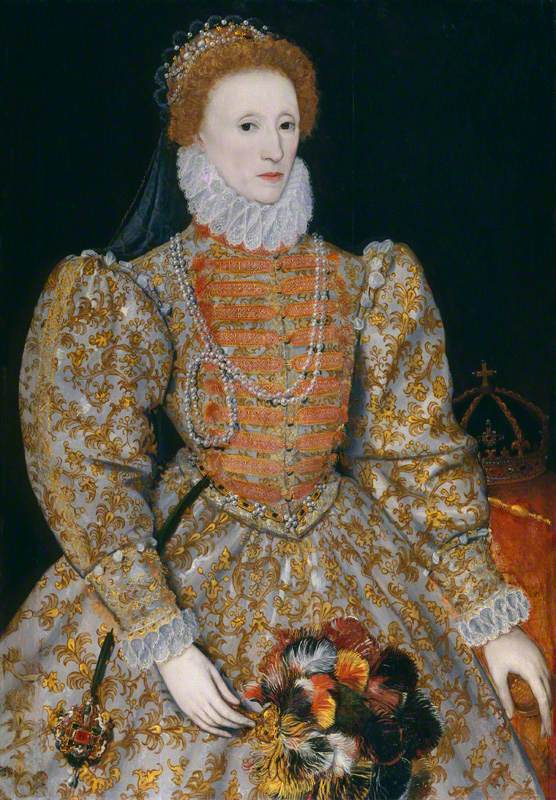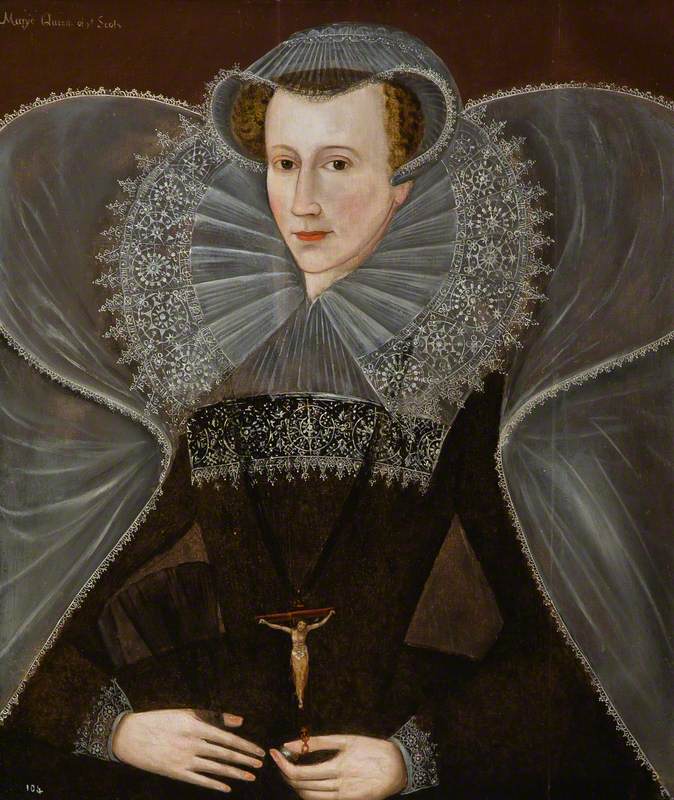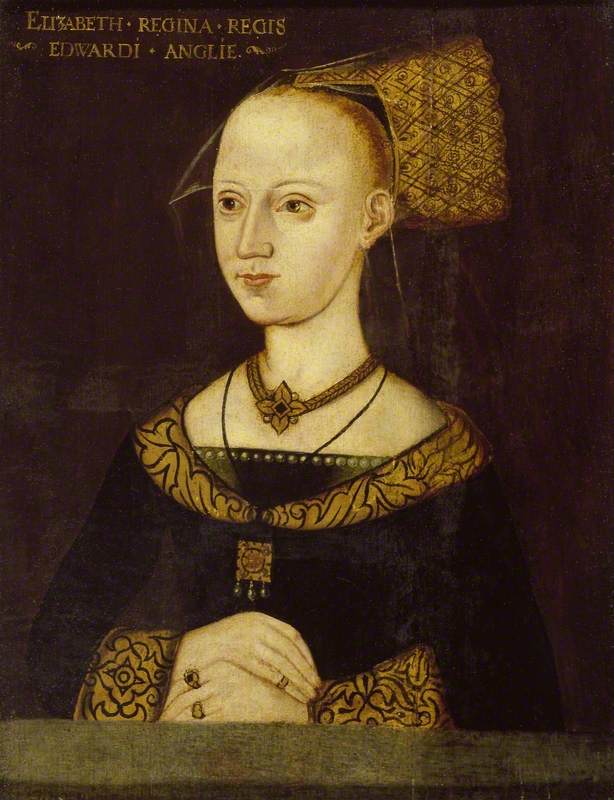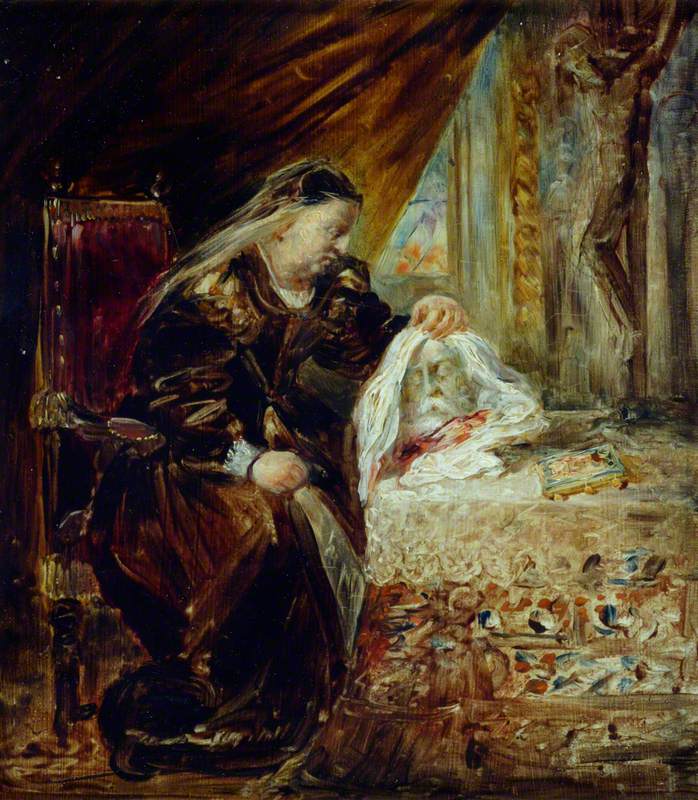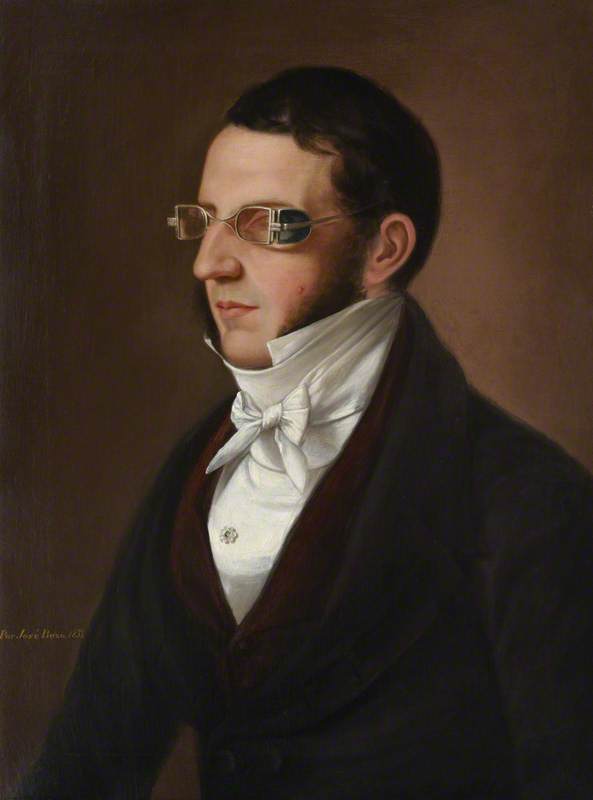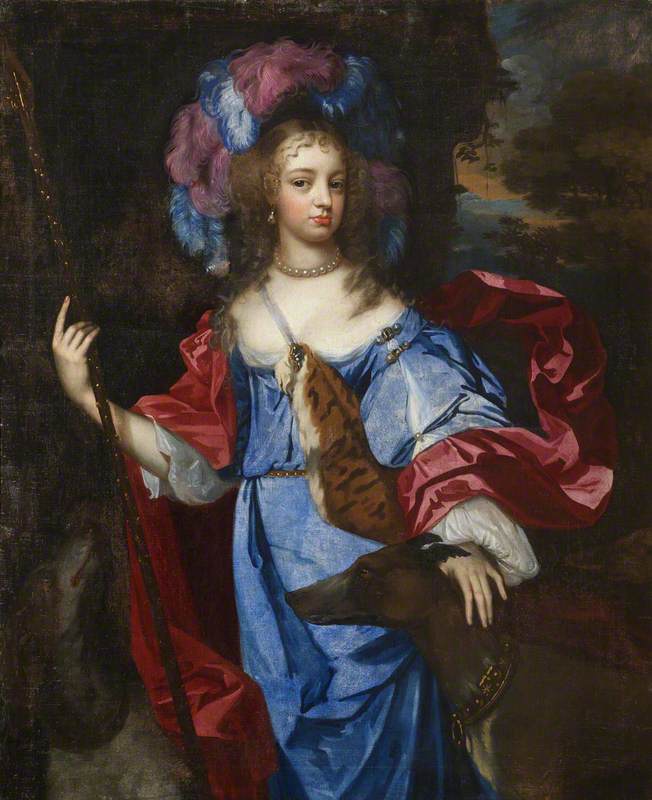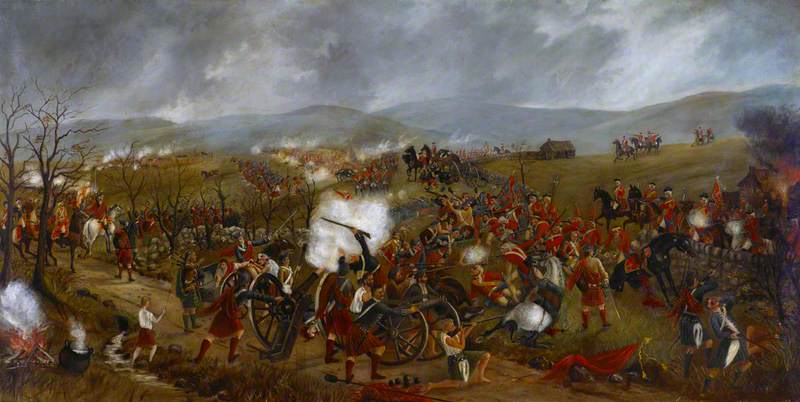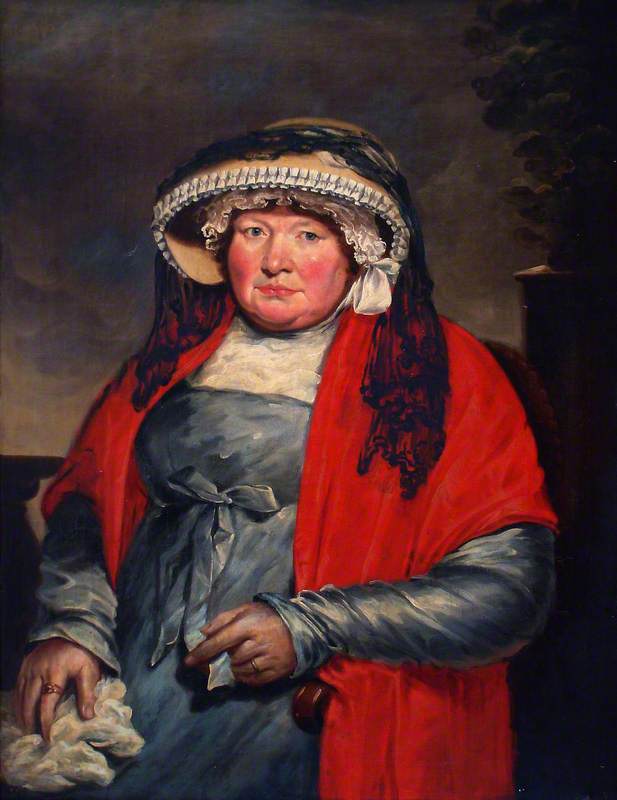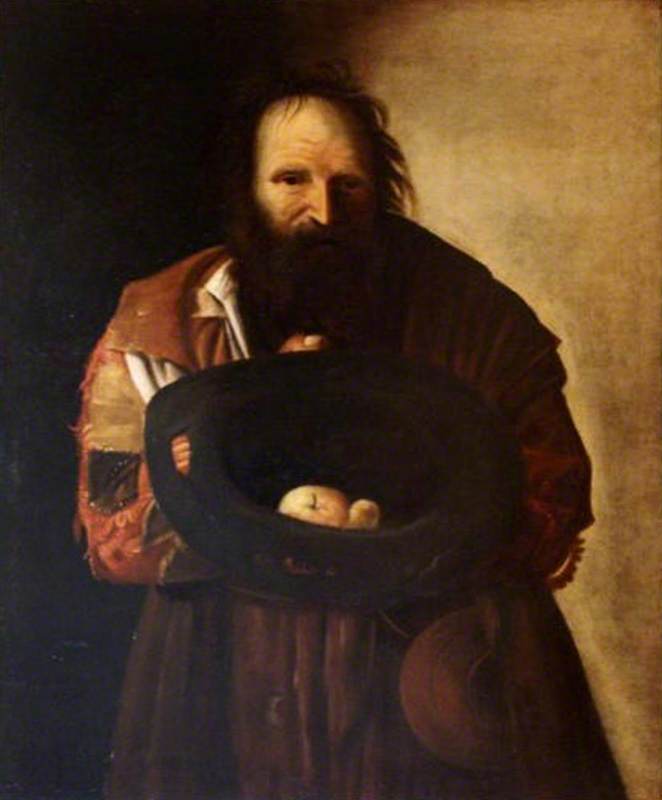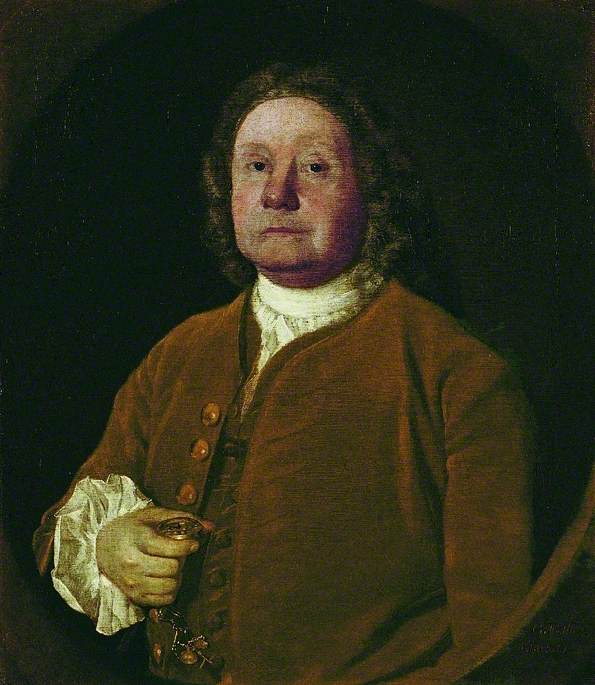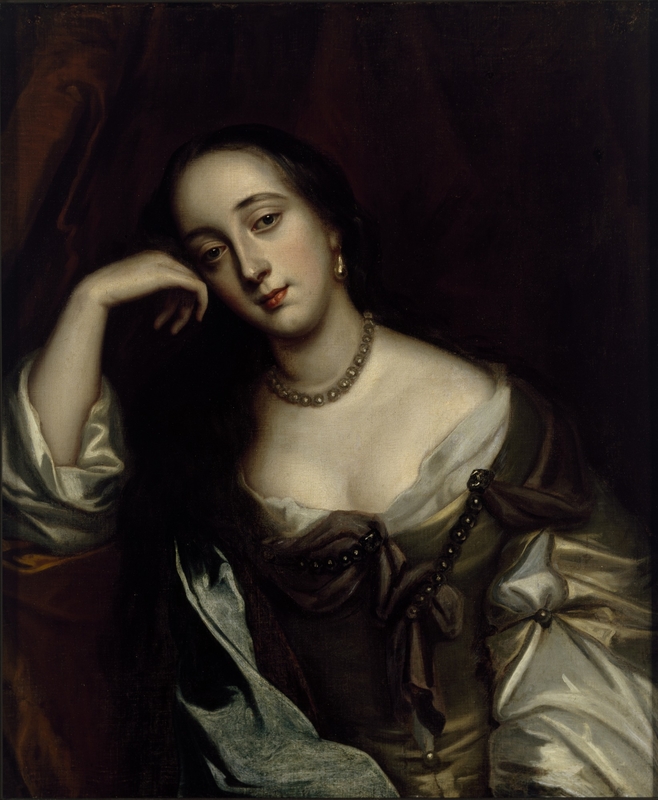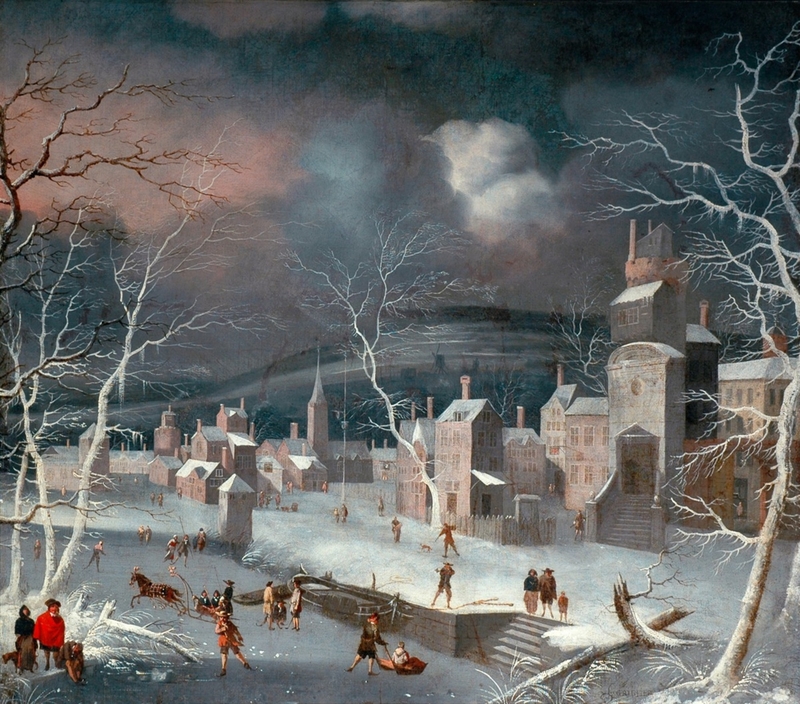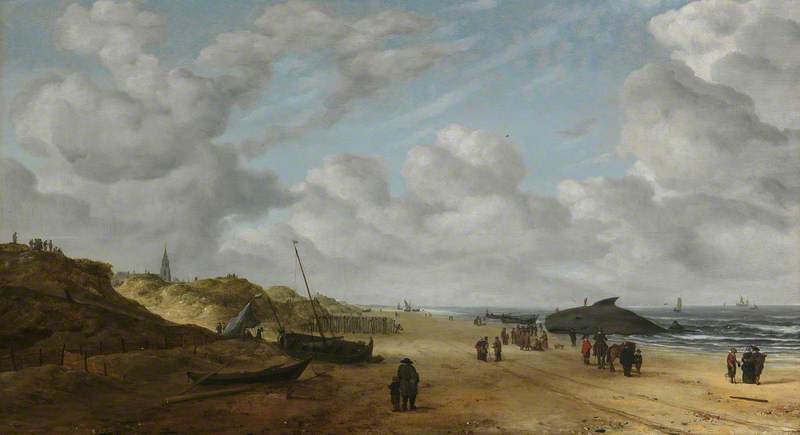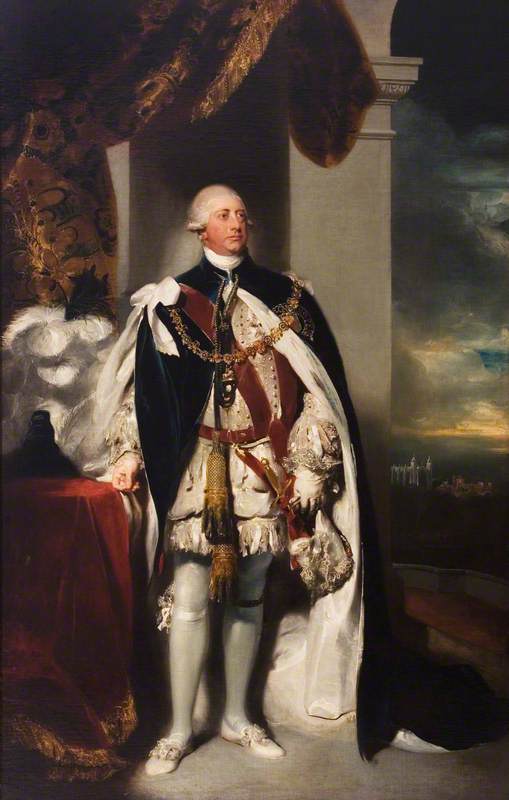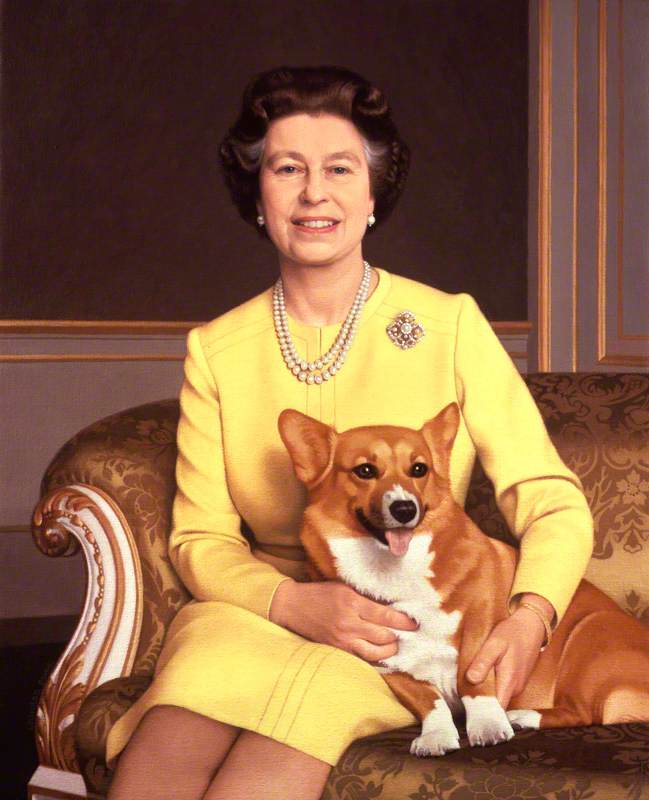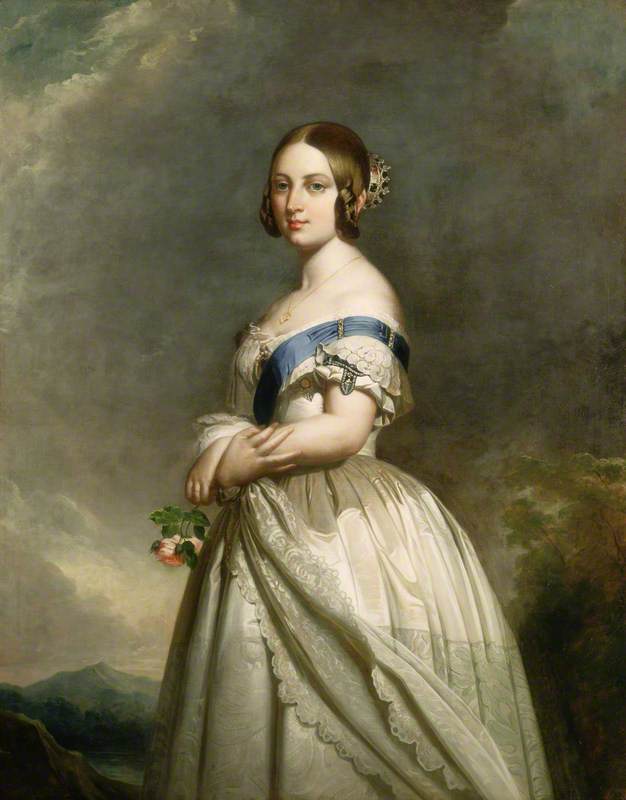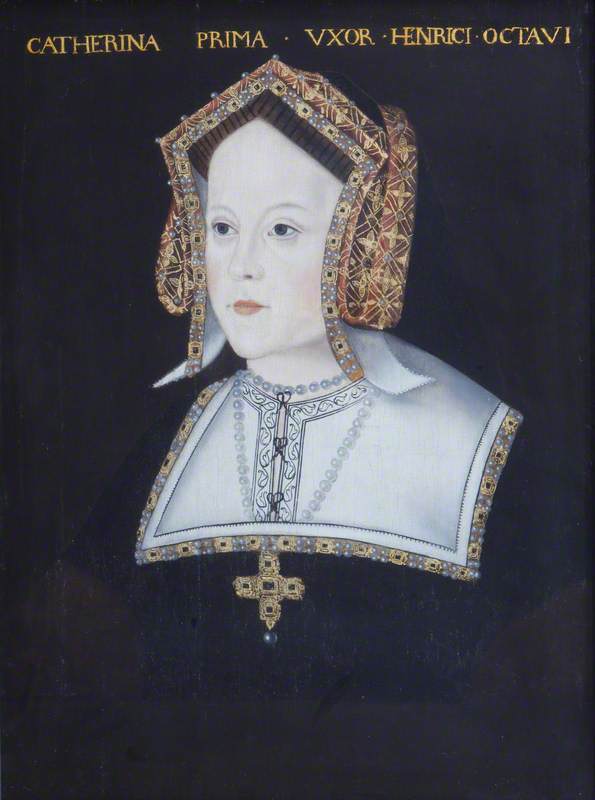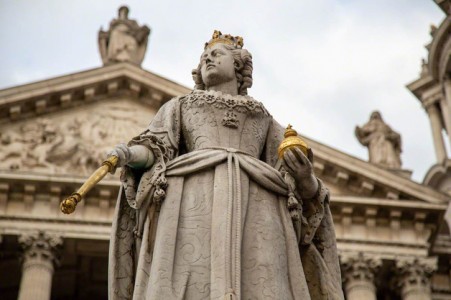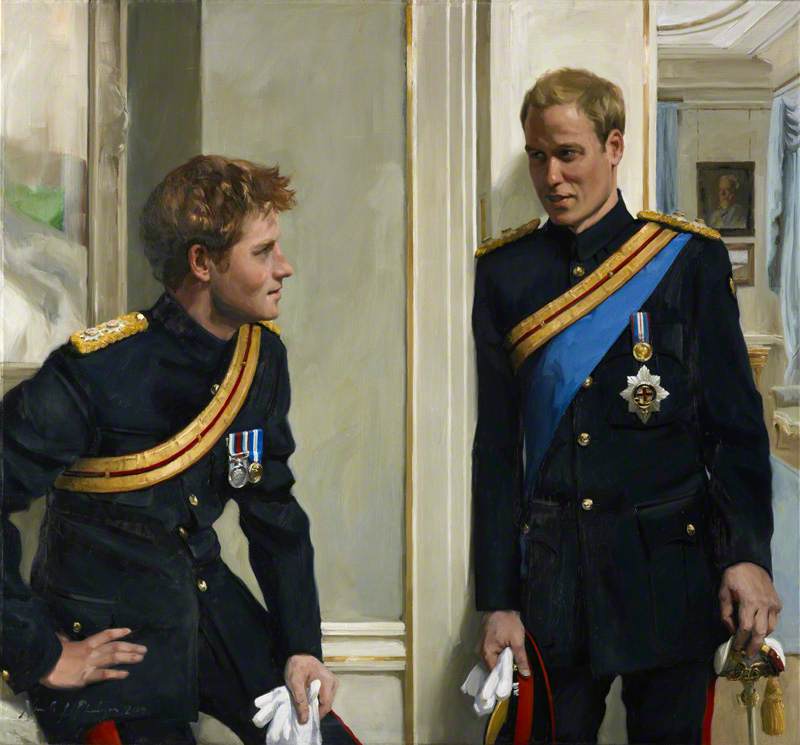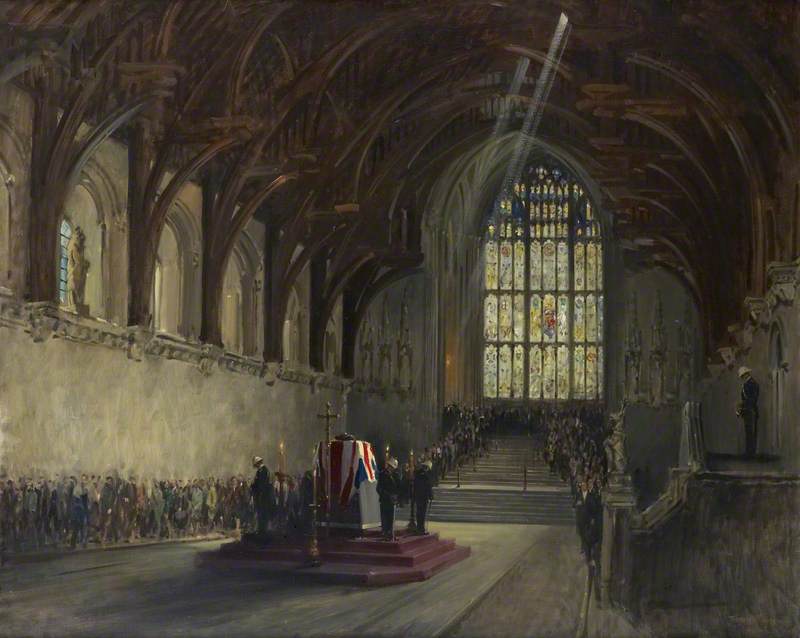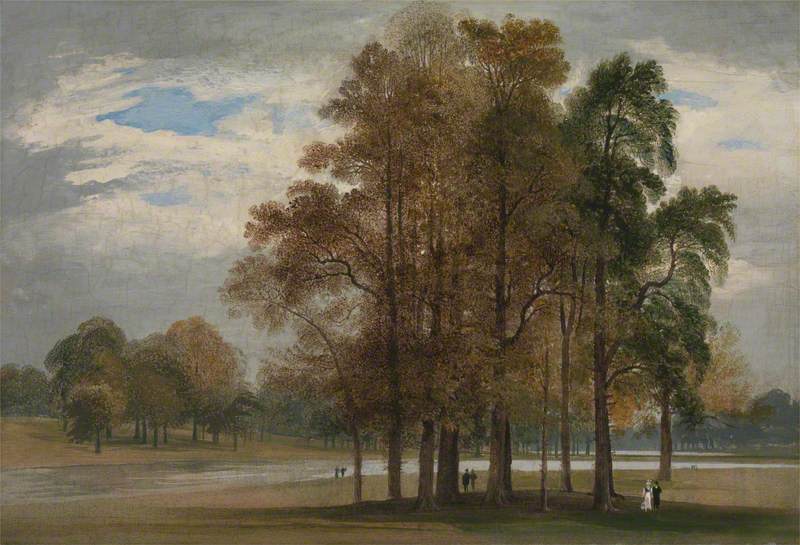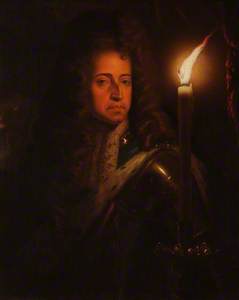This painting by Godfried Schalcken can be found at the National Trust property of Attingham Park. On first impression the technique of painting the subject by candlelight is what draws the viewer in. This is not chiaroscuro as perfected by Caravaggio but rather a depiction of the candle itself and the light's effect on other subjects. Without a title it would be very difficult to perceive a former king of England.
William III (1650–1702), by Candlelight
1695
Godfried Schalcken (1643–1706) 
Royal portraits have two very specific functions. Firstly, to clearly depict the monarch in their regalia or costume, which would often be heavily laden with symbolism of power and divine right. Secondly, the depiction of the monarch needs to be clear and recognisable as numerous copies would be distributed throughout the kingdom for the benefit of subjects.
The image of Henry VIII by Hans Holbein the younger is immediately recognisable and was copied copiously during and after Henry's reign.
Henry VIII (1491–1547)
c.1543/1547
Hans Holbein the younger (c.1497–1543) (studio of) 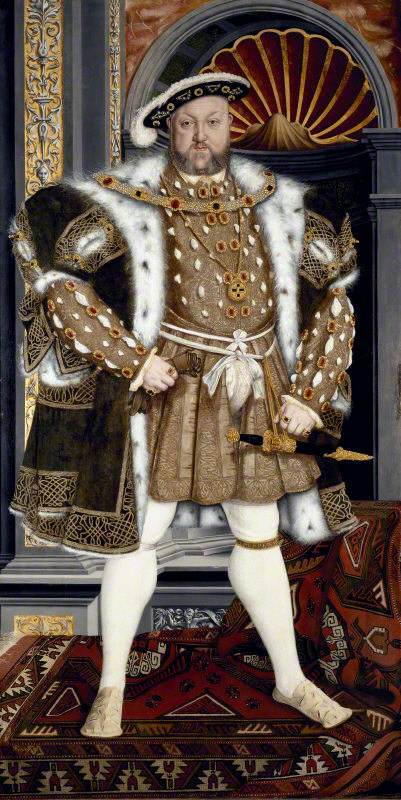
The dilemma with this painting of William III is neither function is met; we can barely make out his features and the only other copy resides in the Rijksmuseum in Amsterdam.
The only logical conclusion is that this portrait was created for art's sake, to be painted in the most cutting-edge style of the day. Schalcken was famous for his depictions of candlelight and as a Dutchman he would have been welcomed to the court of William who was also the Prince of Orange. Interestingly, William III has been treated by historiography as a cold but militarily brilliant person, with indifference to the realm of England he acquired through marriage to his wife Mary Stuart.
Yet this painting shows a cultured man who was not above holding a burning candle in order to obtain the right artistic affect. A contemporary account recalls 'he gave up his majesty the candle to hold, till the tallow ran down upon his fingers'.
View of the South Front of Hampton Court Palace from the Broad Walk
1827–1849
George Hilditch (1803–1857) 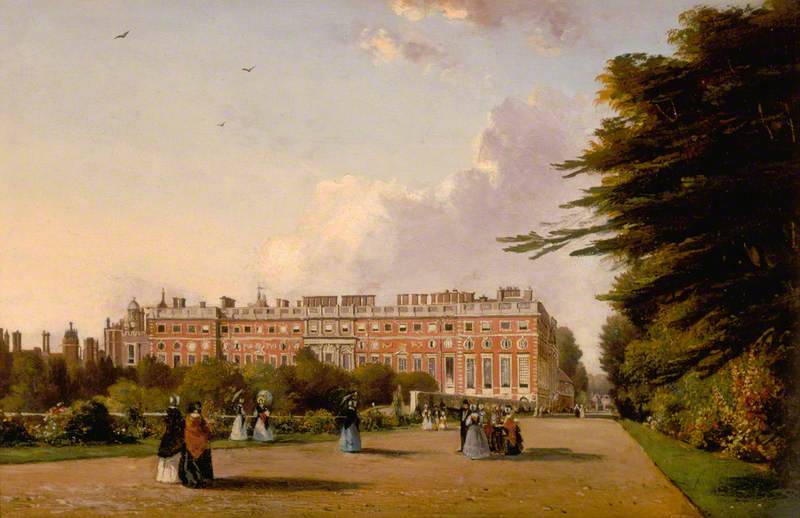
We know William was a big patron of the arts and his commissions had a pronounced lasting effect on English style. This notable impact is evident at Hampton Court where he transformed a large section of the old Tudor Palace into the Baroque splendour we see today.
Edward Bettella, former Art UK Production Manager
